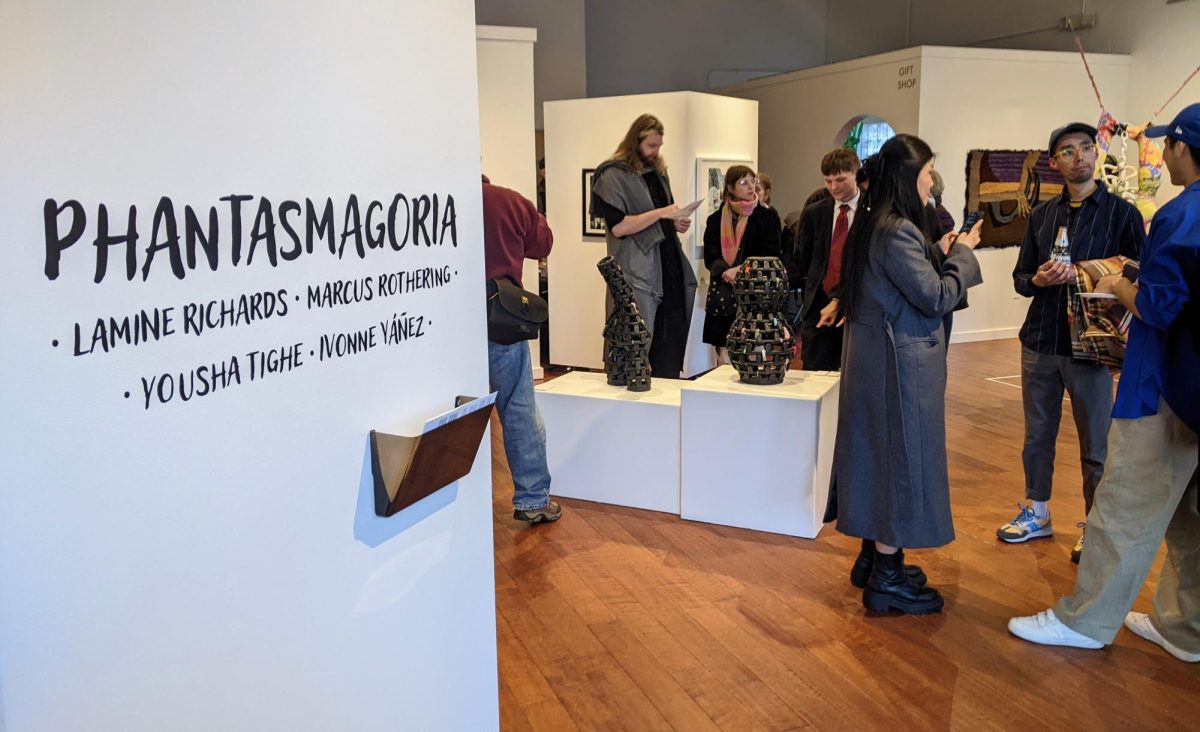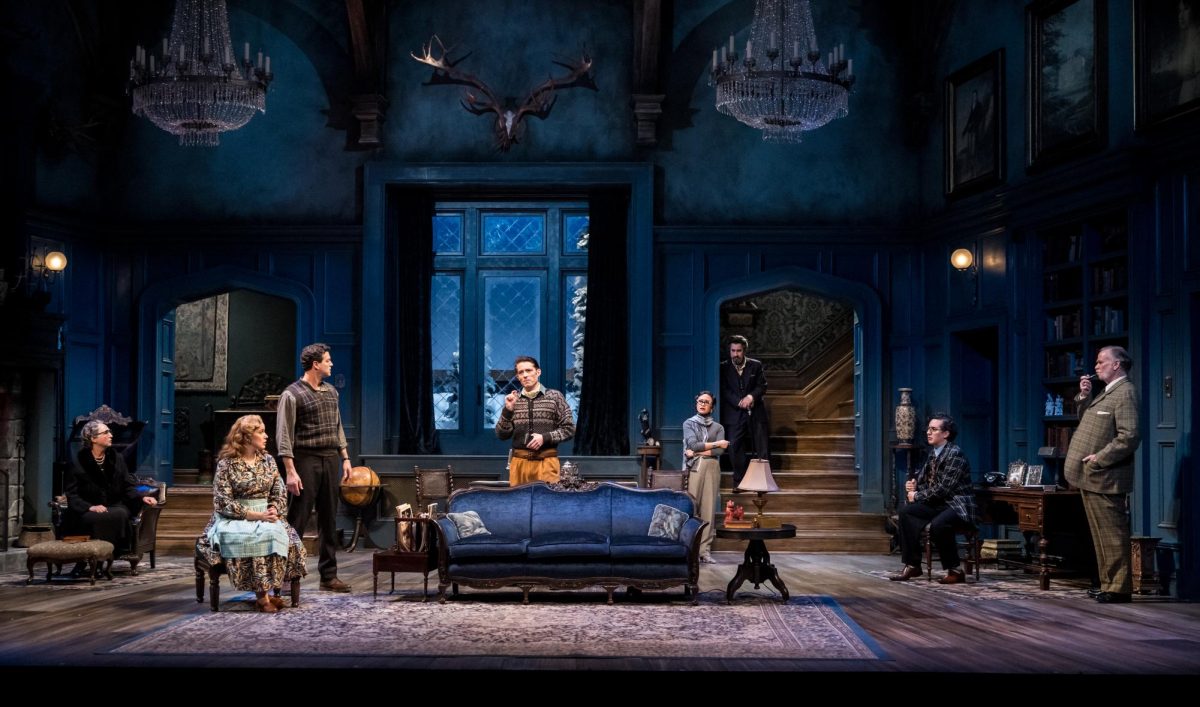When someone says street art, what comes to mind? Graffiti? Sculptures?
How about glass?
In 1998, Chris Ahalt, was taken under the wing (or kiln) of the Minnesota street art scene. Now, he is a pioneer in the Minneapolis flame-working scene, makes one-of-a-kind glass balloon pieces and showcases his talent across the world.
“I’d always liked glass, but had no idea how to work with it … but I thought I’d give it a shot,” said Ahalt at Legacy Glassworks during his showcase “FROZEN” on Friday night. “The thing is, if you were decent at it back in ‘98, you were making a living off it. There just weren’t many people doing it.”
Brought up on the likes of graffiti and hooliganism, Ahalt graduated from the Minneapolis College of Art and Design in 2000 with a major in sculpture and furniture design. After graduating, Ahalt began to focus heavily on his glasswork and took an apprenticeship in Venice, Italy. Here, Ahalt says, he truly started to refine his style and niche narrative.
“The whole idea was to stick with endangered animals, and then I quickly realized that everything was endangered,” said Ahalt. “But with that in mind, my pipes are all strung-up and bound — this makes it a much better narrative than a functional piece.”
From hippos to elephants to iguanas, Ahalt’s work captures vivid emotion. “Glass balloon pipes” as he calls them, these pieces look like something out of a Dr. Seuss book … with an air of seriousness.
About one foot tall, gorgeously intricate and light as air, these translucent pastel shards reflect surrounding light and emanate struggle. Each animal is “tied” to a base piece that supports the sculpture. With its underbelly or leg cinched with rope, the animals’ texture looks as though it’s made from a bed sheet. Remember, this is glass we’re talking about.
But wait. What is glass blowing exactly?
“You break it down and it’s like putting parts together. It’s a long process,” Ahalt said. “You have to use breath to create each tube and then treat it like a sculpture.”
With torches blazing and kiln firing, each piece can take weeks to complete. Molding, bending and finessing each glass rod into the desired product is a process Ahalt says can be exhausting, but always worth it.
With some pieces exceeding the $1,000 mark at Legacy’s showcase on Friday, we’d say so, too.
“The level of detail that he puts into it really makes Chris unique,” said Legacy Glasswork’s founder and curator Josh Wilken-Simon. “There are a lot of glassblowers out there, but he is just so, so unique. All of his pieces tell a story.”
Starting with $200 from a grocery store gig and his cousin’s artwork, Wilken-Simon opened up Legacy Glassworks in Duluth. Now with a gallery in Minneapolis as well, he regularly teams up with Ahalt for events in the Uptown showroom.
This sort of “from the ground up” mentality is what keeps the glass blowing community alive in frigid Minnesota.
“When I first started getting into this stuff, which was like six months ago, I kind of looked at Chris’s pieces and thought they were kinda goofy,” said “FROZEN” show attendee and Mankato State student Chris Bilech. “But now that I’m really into it, I get so much inspiration from these super awesome pieces.”
From young to old, Ahalt has truly blown the way for artists to break into the niche art from.
“Ahalt’s work is so much more intricate and detailed than what I normally see,” said show attendee Katie Sauer. “I really want to get into it, but I have two young kids and work.”’
Ahalt, on the other hand, makes sure to stay giddy every time he goes into work.
“I like tedious things. It’s so satisfying to open the kiln and seeing how the shiny pieces turn out. It’s like Christmas,” said Ahalt. “Truthfully, though, I hate the heat. So yeah, that doesn’t make sense.”
Well, your work is fire, Chris — so I’d get used to it.















